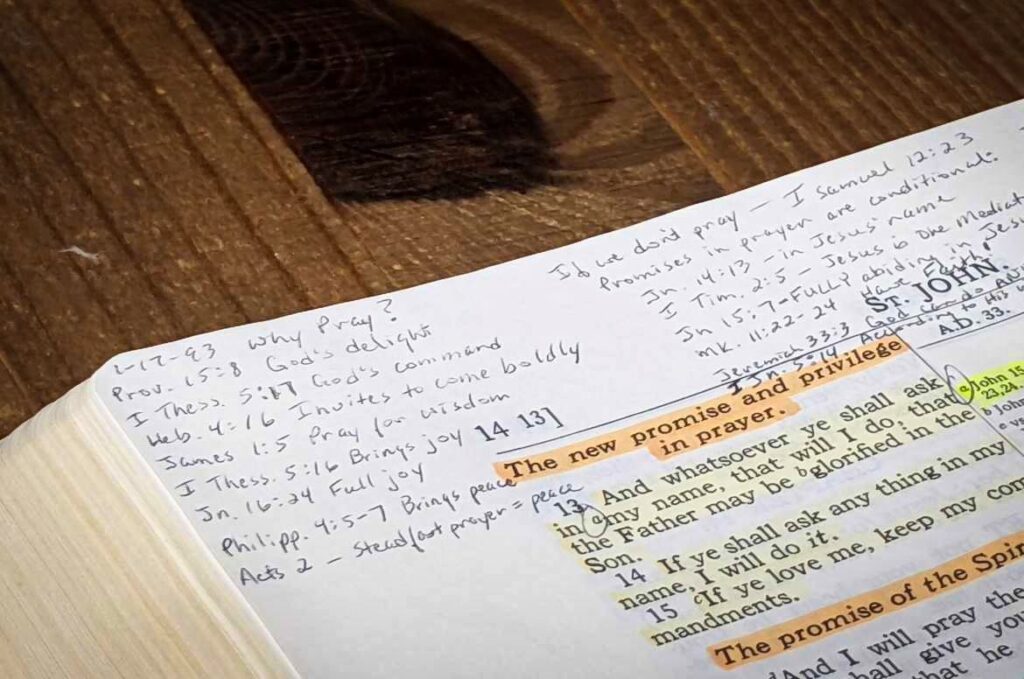
Studying the Bible is deeply personal and profoundly enriching. For students of the Scripture, annotating the Bible isn’t merely about marking a page; it’s about deepening understanding, drawing connections, and allowing God’s word to resonate more fully in our lives.
There are several methods available for you to capture and process these spiritual insights. Here’s an exploration of each to help you find the one that fits you best.
pen or pencil annotations
One of the most traditional ways to record observations is by using a pen or pencil. Directly jotting down your thoughts in the margins offers a direct link between the text and your insights. Over time, these handwritten notes become a testament to your spiritual journey, showcasing how your understanding of verses might evolve. However, remember to use a pen that doesn’t bleed through the pages or a pencil that can be easily erased if needed.
highlighting verses
For those who are visual learners, highlighters can be invaluable. Highlighting passages or crucial verses allows you to quickly identify and revisit impactful portions of scripture. But a word of advice: establish a color-coding system early on. By grouping similar themes under a specific color, you can create a visual map of the Bible’s teachings. Below, you’ll find a list of abbreviations for themes that you can use as a foundation for your color chart.
Using Index Cards and Sticky Notes
If you’re hesitant about writing directly in your Bible or if you want to delve deeply into a topic, index cards or sticky notes can be your best allies. By writing down your thoughts separately, you can offer more in-depth analysis without crowding the Bible’s margins. This method also provides flexibility, as you can rearrange or remove notes as your understanding expands or changes.
Embracing Digital Annotations
In our modern age, numerous digital Bible versions come equipped with built-in annotation features. If you’re tech-savvy, this could be your preferred route. These features often include options to highlight, write notes, and even share your insights with others. Plus, the advantage of cloud backups means you won’t ever lose your observations.
Maintaining Separate Notebooks
For those who wish to keep their Bible pristine or want to compile exhaustive notes, maintaining a separate notebook or journal is an excellent method. Over time, this notebook can serve as a comprehensive guide to your biblical studies, with ample space for drawing connections between different books or verses.
Choosing Your Method
Regardless of which annotation style you lean towards, remember that consistency is key. The primary aim should be clarity of thought and ease of future reference. Your notes are a testament to your journey through God’s word; make sure they serve you well in your ongoing exploration and reflection.
Abbreviations for Theme-Based Annotation
To assist in creating a color chart or for shorthand notations, use the following abbreviations:
GR – Grace
HS – Holy Spirit
GD – God
JS – Jesus
TR – Trinity
SV – Salvation
SN – Sin
CH – Church
ED – Edification
TT – Truth
DC – Doctrine
HL – Hell
DH – Death
HV – Heaven
LW – Law
RP – Rapture
2N – Second Coming
RS – Resurrection
PY – Prophecy

3 thoughts on “Best Way to Make Notes in Bible Margins”
What is the wide margin publisher you have in the photo of this article?
Hi Kevin,
That Bible, as shown on the Home Page, is the KJV Journaling Wide Margin Bible available from Holman. You can find it here: https://amzn.to/3EAisN7
Actually, I see you were referring to the Making notes in Bible Margins page, so that one is an original Scofield available from Oxford Publishers. But the most recent publisher is The KJV Store of the Netherlands, and is available here: https://amzn.to/42ND7Fz